The Child Labor in Your Valentine's Chocolate


Americans just love chocolate and certain times of the year that becomes very evident. Valentine’s Day is one of them. What many people don’t know is that those heart-shaped boxes of chocolate come at a steep human price.
Over 70 percent of the world’s cocoa supply comes from two West African countries: the Ivory Coast and Ghana. There are 1.8 million children working in cocoa production in both countries, and many are working under forced conditions, doing hazardous work. The amount of children working in West African cocoa production continues to grow, as a Tulane University report released in July revealed. The percentage of children working in cocoa production in Ghana and the Ivory Coast countries increased from 2008 to 2014. As of 2014, there were 2.03 million children found doing hazardous work in cocoa production in both countries.
What children working in cocoa production are required to do and are exposed to is heartbreaking. The Food Empowerment Project details the lives of children working in the cocoa sector. They work long hours, starting work early in the morning and finishing in the evening. They operate chainsaws to clear forests, climb cocoa trees to chop bean pods with a machete, carry sacks containing the pods on their back that weigh over 100 pounds and drag them through forests. They are exposed to hazardous chemicals and don’t go to school when working.
There is a simple reason why West African cocoa farmers use child labor. They don’t make much, so they can’t hire adults to harvest their crops, which, as the International Labor Rights Forum stated, “perpetuates the child trafficking and worst forms of child labor that have plagued the industry.” West African communities rely on cocoa farming to eke out a living, but the low prices they receive for their crops leave them with “impoverished incomes and with no choice but to pull their children from school and have them help on the plantation.” Cocoa farmers earn less than $2 a day.
In recent years there have been “significant investments in cocoa sustainability initiatives by the public, private, and nonprofit sectors in recent years,” according to a report by the World Cocoa Foundation. But despite those investments, “cocoa farming continues to face significant challenges.” The report cites increased competition from other cash crops, declining soil fertility and lack of knowledge of how to apply fertilizer among those challenges.
The reports of child labor in cocoa production have prompted lawsuits and consumer campaigns by non-profit organizations. Back in September, the Seattle-based law firm Hagens Berman filed a lawsuit in California against three big chocolate companies (Hershey, Mars and Nestle USA, Inc.) over the “practice of importing cocoa beans from suppliers who use child labor, including trafficked and forced child labor.” The lawsuit accuses all three of importing cocoa beans from the Ivory Coast and singles out the companies for their reliance on child labor to harvest the cocoa beans that make the chocolate that goes into its products.
Recently, both ILRF and Green America launched campaigns called “Have a Heart, Godiva.” The ILRF campaign points out that Godiva has “spent the past year exploring what sustainability means to the company and what a policy might look like” because of consumer pressure. Godiva has committed to a goal of 100 percent sustainability by 2020. However, the campaign points out that “there is no need to reinvent the wheel” as fair trade companies already source directly from cocoa farmers which increase the payments the farmers receive and improve working conditions plus help remove children from cocoa farms. The campaign specifically asks Godiva to create a “time-bound plan to action to trace its supply chain, prevent child labor and ensure cocoa farmers earn their fair share.”
The Green America campaign asks Godiva to only purchase cocoa third-party certified to be child labor free, create a specific timeline to achieve it, and give regular public updates. “This will assure your customers that you do not rely on the exploitation of farmer communities or forced child labor to produce your products,” the campaign proclaims.
Both campaigns highlight a simple reality: it's time for major chocolate companies to take steps that will remove child labor from the West African cocoa sector.
Ready to vote with your dollars? Buy Fair Trade. Here are 17 delicious options -- but really any brand will do!
Photo: Flickr/Siona Karen
3p Weekend: 4 Innovative Solutions to the Ocean Plastic Crisis
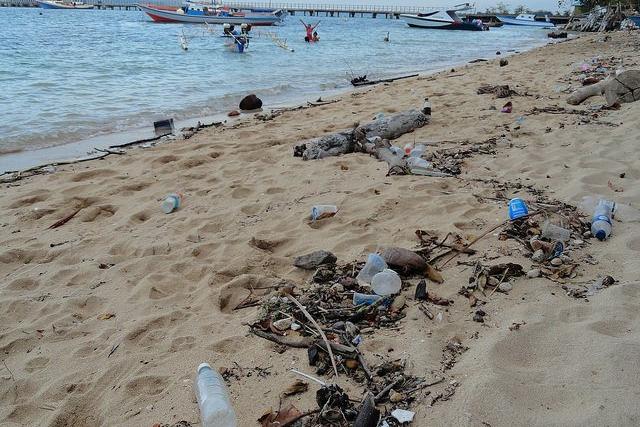
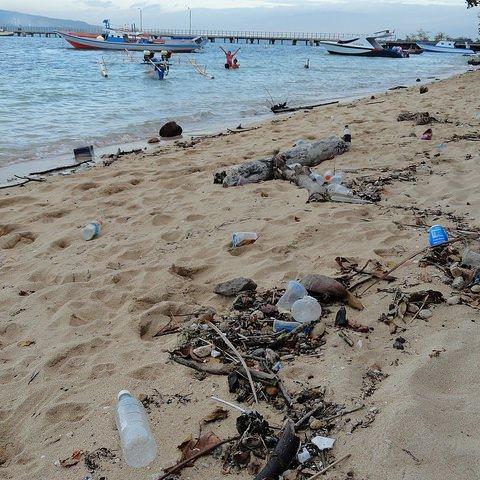
With a busy week behind you and the weekend within reach, there’s no shame in taking things a bit easy on Friday afternoon. With this in mind, every Friday TriplePundit will give you a fun, easy read on a topic you care about. So, take a break from those endless email threads and spend five minutes catching up on the latest trends in sustainability and business.
Our oceans are in pretty bad shape these days. As are the plants and animals that call them home. From sea-animal deaths to once-pristine beaches littered with waste, the evidence of the ocean plastic crisis is all around us. If we stick to this trajectory, Earth's oceans will have more plastic in them than fish by 2050, according to a study released last month by the Ocean Conservancy.
Halting the tide of debris is a crucial step to thwarting the crisis -- and moves like America's decision to ban plastic microbeads from personal care products will surely prove invaluable. But the hard reality is: We've already dumped so much waste into our oceans that devising ways to remove some of it has become an unavoidable task.
Fortunately for us, innovators the world-over are tackling this challenge that was once considered impossible.
1. 'The largest cleanup in history'
Back in 2013, Boyan Slat, a then 19-year-old Dutch national, dreamed up a concept he believed could remove mountains of waste from our oceans with a passive design and little equipment. A year later his NGO, the Ocean Cleanup, raised $2.2 million in the most successful nonprofit crowdfunding campaign in history.
Slat's idea is simple: Instead of deploying resources into the oceans to remove debris, we simply use the ocean’s currents to clean them instead. In his concept, large floating barriers would be deployed -- theoretically catching debris as currents ran through them.
https://youtu.be/6IjaZ2g-21E
After two years of testing, the Ocean Cleanup is preparing to deploy its first pilot barrier in the second quarter of this year. The 100-meter segment will be constructed in the North Sea, about 14 miles off the coast of the Netherlands. Researchers will "monitor the effects of real-life sea conditions, with a focus on waves and currents," to better prepare for a full-scale launch, the nonprofit said in a press release.
To learn more about the concept, check out this video interview with young inventor Boyan Slat.
2. Low-tech, 24/7 rubbish collection
Australian surfers Andrew Turton and Pete Ceglinski spend a good amount of time at ports and marinas. After years of watching garbage float by, the two devised a concept to engage ports, marinas and yacht clubs in the fight against ocean plastic.
As the duo put it on their Indiegogo page, which received full backing at the start of this year: "Mother nature brings us the rubbish," and they do the rest with their device called the Seabin.
Here's how it works: The Seabin is attached to an unused corner of a marina or port that is known to become clogged with trash and debris. A shore-based water pump creates a flow of water into the bin, bringing with it bottles, bags and other debris. The water is pumped through, while a biodegradable catch-bag retains the rubbish. Bags can be easily emptied on the marina's regular cleaning schedule.
After raising more than $250,000 on Indiegogo, Turton and Ceglinski plan to ship the first Seabins at the end of this year.
3. A water wheel for waste
Okay, enough about concepts. Let's talk about a system that's already in use and making a big difference. Baltimore's Inner Harbor Water Wheel, or “Mr. Trash Wheel” to locals, harnesses the power of water and sunlight to collect debris flowing down the Jones Falls River.
The river's current turns the wheel, which lifts trash and debris from the water and deposits it into a dumpster barge. When the water current is too slow, a solar panel array provides additional power to keep the machine running. Full dumpsters are towed away by boat, and a new dumpster is put in place. Pretty simple, right?
Beyond that, some experts have called it the only "truly feasible" concept to harvest debris from waterways. Click here to check out a live feed of the trash wheel in action.
4. Hunting 'ghost gear'
Launched in September 2015, the Global Ghost Gear Initiative is the first effort dedicated to tackling the problem of ghost fishing gear at a global scale. Ghost gear, which refers to abandoned fishing equipment like nets, line, rope and traps, makes up around 10 percent of global marine litter. An estimated 640,000 tons is added to our oceans annually.
The initiative supports nearly 20 projects around the world that capture and make use of ghost gear. Such innovations include:
- In the U.S., the NOAA's Fishing for Energy program converts derelict fishing gear into energy. The program also provides grants for gear removal and develops technologies to reduce gear loss.
- In Africa and the Philippines, the Net-Works program rallies local communities to collect discarded nets. They then sell them back into a global supply chain – generating income and giving those waste-nets a second life as new carpet tile.
- In the Maldives, the Olive Ridley Project is actively fighting ghost nets in the Indian Ocean through removal, research and awareness.
- In the seas around Great Britain, Scandinavia and Western Europe, Fishing for Litter deploys fishing boats strapped with collection bags to remove ghost gear and other debris.
The initiative is still taking on new partners, and its portfolio of projects is growing all the time.
Image credits: 1) Flickr/Fabio Achilli 2) The Ocean Cleanup 3) The Seabin Project via Indiegogo 4) The Waterfront Partnership of Baltimore
A Bump in the Road: Impact of the SCOTUS Clean Power Plan Decision


Earlier this week, the Supreme Court voted 5-4 along idealogical lines to issue a stay that temporarily halts progress on the EPA's Clean Power Plan. Designed to limit greenhouse gas emissions from existing power plants, the plan is a mainstay of President Barack Obama's national climate-action strategy.
The order briefly stated that the Clean Power Plan is on hold until legal challenges to the rule have run their course. The order also noted that the four liberal judges on the court all oppose issuing the stay.
According to John Coequyt, director of federal and international climate campaigns for the Sierra Club, issuing a stay on regulations before lower courts have ruled on their legal merits is "without precedent," hinting at a political motivation for the order.
In a telephone press conference on Thursday, Coequyt emphasized the Supreme Court's order is "only a pause in the process of establishing state plans."
"We want to be clear ... that the court's decision does not overturn the policy or decide its legal merits," Coequyt said.
As to its merits, the U.S. Court of Appeals for the District of Columbia Circuit, which denied a similar stay request in December, will hear oral arguments beginning on June 2. Once the lower court issues its ruling, the Supreme Court, assuming it hears the case, could make a final decision as soon as June of 2017 but "likely no later than June of 2018," said Sierra Club's chief climate counsel, Joanne Spalding.
Mandatory compliance with the Clean Power Plan does not begin until 2022, but states are required to submit their emissions-reductions strategies to the EPA by September, though states are allowed to request a two-year extension. Targets are unique to every state, but the overall goal of the plan is to reduce carbon emissions by 32 percent below 2005 levels from new and existing coal power plants.
Despite claims from industry opponents and 27 Republican-led states that the EPA regulation is an "unprecedented power grab," there is precedent for the Clean Power Plan -- unlike for this week's stay. The Supreme Court itself upheld the regulation of greenhouse gas emissions, specifically granting authority for the EPA to limit carbon pollution from power plants under the Clean Air Act.
Several states, including Colorado, Virginia, California and Washington, are committed to continue implementing the plan despite the Supreme Court's stay. Further, a coalition of 14 states led by New York issued a statement stressing their support of the Clean Power Plan.
As the legal process plays out, the EPA will make available a so-called 'toolbox' for states that intend to continue with the planning process.
Clean-energy trend not diminished
Nearly two-thirds of new U.S. generating capacity in 2015 was from renewable sources, the Federal Energy Regulatory Commission reported last week in its latest Energy Infrastructure Report.
"Carbon pollution from the electric sector has been declining over the last several years," Spalding said on Thursday.
"We've transitioned from dirty fossil energy to clean renewable energy. That trend will continue independent of the Clean Power Plan."
That trend is global, added David Waskow, director of the World Resources Institute's International Climate Initiative.
"According to Bloomberg New Energy Finance, more than $300 billion -- a recored amount -- was invested in clean energy last year around the world," Waskow said.
In the past five years, 231 coal plants have been retired in the United States. The Clean Power Plan is not forcing a trend; it is simply following one that is already in place and picking up steam.
"The fate of the coal industry and the shift to clean energy is not on hold," Sierra Club's Coequyt said.
Those crazy Americans: Momentum from Paris remains undeterred
Certainly the international community is watching what happens with the legal maneuvering as fossil fuel interests fight the inevitable shift of the energy economy. But the American political and legal process is nothing new to observers outside of the U.S., said Alden Meyer, director of strategy and policy with the Union of Concerned Scientists.
"I think there's a pretty broad understanding among most other countries about the domestic landscape on climate in general in the U.S. and on the Clean Power Plan in particular," Meyer said.
"It's not a surprise to anyone that there are legal challenges to the Clean Power Plan state-implementation issues."
Meyer said some of his colleagues expressed concern over a "repeat of Kyoto" where the world "accommodated the U.S." in the design of the agreement only to see the U.S. not implement it. "But there's also awareness of the big differences between now and then," Meyer added.
Among those differences, he explained, are greater public awareness and concern about climate change, the economic opportunity of clean energy, and engagement from business and labor.
And then there's the momentum generated for climate action in Paris.
"Are we disappointed? Sure," Spalding from the Sierra Club conceded. "But the Paris Agreement is popular. The Paris Agreement has momentum, and the Paris Agreement is 100 percent on track."
"The Supreme Court's order staying the plan will not affect our ability to achieve our international commitments."
Image credit: Flickr/Gemstone
This post first published in GlobalWarmingisReal.com
Investors Call For Mining Companies To Address Climate Risks


A group of shareholders called the ‘Aiming for A’ investor coalition is asking three giant mining companies to be more transparent about the climate change risks to their businesses. The investors are responsible for over $8 trillion in assets.
Shareholder resolutions to Anglo American, Glencore and Rio Tinto include support from four of the world’s largest pension funds. All three resolutions are identical and call for the companies to include the following in their routine annual reporting from 2017:
- Further information about ongoing operational emissions management
- Asset portfolio resilience to the International Energy Agency’s scenarios
- Low-carbon energy research and development (R&D) and investment strategies
- Relevant strategic key performance indicators (KPIs) and executive incentives
- Public policy positions relating to climate change
Climate-change risks to the mining sector are significant
The mining sector faces significant climate change risks in its supply chain, a report by the International Committee on Mining and Metals (ICMM) details.The physical risks to mining operations occur “because these industries are often located in challenging geographies, rely on fixed assets with long lifetimes, involve global supply chains, manage,” the report's authors state. These physical risks include changes to rainfall, higher sea levels, and lower freshwater lake or river levels. Physical risks may impact asset values, reduce efficiency, increase the risks of not complying with regulations, force changes in operating practices, and reduce or increase demand for certain products or services.
Mining companies already operate in areas that experience weather extremes, but as the climate changes they will need to cope with even more physical risks to their operations. There are certain characteristics of the mining sector that may increase exposure to climate risks -- namely a reliance on “large fixed assets with long design lifetimes,” which means that potential climate impacts need to “considered at the outset,” the ICMM report cites. Otherwise, designing and planning decisions may not be resilient and could increase risks to operations and even the local environment.
The ICCM report points out two key areas where the mining sector is vulnerable. One of those areas is water: Water is needed for mining, so any climate-related impacts on water -- such as changes to rainfall and depleting freshwater reserves -- will directly impact mining operations. And in areas where water resources are already under stress, additional stress brought on by a warming planet will only increase risks to operations.
Energy is the other key area of vulnerability noted by the ICCM. It takes a lot of energy to break, move and process large amounts of ore. Here is where water and energy intersect. Hydroelectric power is deeply affected by water availability, but conventional power is also vulnerable to climate change. Transmission pathways for energy are vulnerable to disruption by extreme weather events such as storms or flooding.
Some mining companies “have already taken steps to mitigate the potential impact of the move to a low-carbon economy and lower commodity prices,” as another report, this one by Institutional Investors Group on Climate Change, states. Some examples are cited, including mining companies that are exploring the potential of new technologies such as carbon capture and storage, while others are setting goals to achieve zero-carbon mining operations.
However, the report's authors are concerned that "the current business strategies of many mining companies may not be sufficiently sustainable given the potential for rapidly changing demand for different commodities triggered by emerging technologies and policy interventions which can and will impact on the sector.” In other words, while some mining companies are addressing climate change risks, others are not.
Image credit: Wikimedia/Eickhoff
The 4 Pillars of Successful Sustainable Development Goals
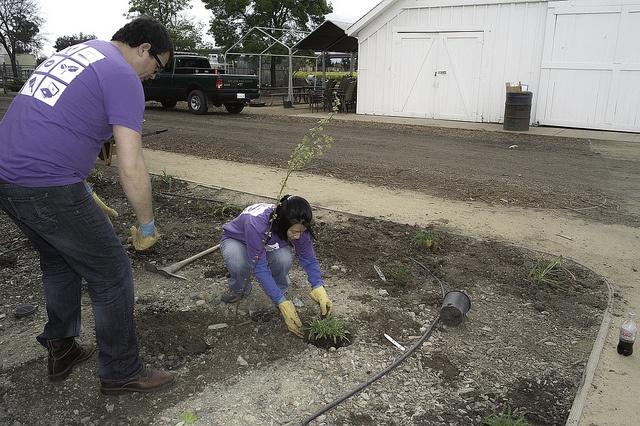

By Nita Kirby
2015 was a fantastic year for many things, including philanthropy. I ended my year by attending a two-day symposium devoted to global volunteerism, and it challenged me to think about employee engagement across our world that is seemingly becoming smaller each day.
In September, the United Nations met to address its post-2015 development agenda that includes a review of goals that could incorporate the private sector in their development. The intent is to build a true public-private partnership to affect measurable change on a global scale. We do this by creating (and meeting) Sustainable Development Goals (or SDGs).
Per the U.N., the objective is a more “universal, inclusive and bold commitment to people and the planet." So, how do we implement measurable change on a global scale? When written out, it seems nearly impossible, until you recognize that several countries, companies and countless volunteers are ready to support (and measure) this initiative!
Global volunteerism
Expanding beyond your borders is not a new concept, but teaming up your volunteerism with one of the SDGs is a great way to bring new life into a program, whether you are at your local nonprofit or sending your employees to an organization in desperate need of skills to transform their services. There are a number of partners that support looking for opportunities from the U.N. Volunteers Site, Global Impact and Points of Light. Each share opportunities that are attuned to meeting an objective and providing needed structure for a solid volunteerism experience.
Idea: The second SDG listed here is “No Hunger.” While that might be a scary goal to achieve on your own, your company can go serve at a soup kitchen in your local area, recruit local restaurants to help feed hungry families, or have a food drive to stock a local pantry.
Corporate philanthropy for today
Eduardo Martinez, the president of the UPS Foundation and a member of the 2030 Agenda, shared his thoughts on how his people are using their talents to meet the SDGs and what to expect the trends to be as we make our way through 2016:
1) Diversity and Inclusion – Taking steps to look deeper into outcomes that ensure that opportunities address the needs of employee resource groups, both hands-on as well as skill-based events, and sharing stories that show how goals were met.
To Do: Have you facilitated an event at your workplace that might inspire other companies to get involved? Create a video and put it on YouTube or Vimeo to share with your employees, prospective candidates and any vendors you work with.
2) Volunteerism – Identifying the value proposition for your colleagues and the organizations you work with; always seeking a higher purpose and authenticity.
To do: Survey your employees using this list of SDGs to see which one they are most interested in working on. Measurable results can come from lots of volunteers working together. Tools like Survey Monkey allow you to create simple polls to get a pulse on your employees’ preferences. It’s the first step to increasing volunteerism in your organization!
3) Environment – Identifying smart ways to lessen your footprint and putting investment back into the world through planting, local gardens and sustainable foods.
To Do: Here’s a simple list to help you and your employees lessen your corporate environmental footprint without drastic measures. First on the list? Turn computers off at night. It saves energy, is completely do-able, and gives much needed closure for the day.
4) Community safety – Finding the core essence of what your company considers safety is key for UPS; this can transcend to any community that requires a safe environment.
To Do: Locate a nearby school, neighborhood or business that could use the help of a trained accountant, safety patrol or advocate at city hall for a much-needed speed bump. Not only will advocating for your community create goodwill in your local area, but it will also help your employees use different skills than those they use in your company.
Creating a system of service
One word – storytelling. There is no better way to convey a message than to sit down and share your service. Social media has enabled us with this vast system to share content and explore one’s point of view on their connections of the world. We are able to connect quickly with those in different places instantaneously.
For example, I can tell you that Cleveland’s highest-rated high schools are at only 68 percent capacity while most of the city’s poorly-rated schools are under capacity, averaging 71 percent utilization, and it MIGHT move you to action.
But what will likely move you more, is the story of Jenna, a high-school sophomore who desperately wants more investment in her local school because, while she has the grades and transportation to switch schools, her little brother, Jamal, does not. Her fight to get better teachers, more funding and after-school programs supported is a story of courage, persistence and the desire to leave things better than when she found them.
Combined with the SDG goal to help the world’s youth receive a quality education, this is a story your company can get behind. You cannot change all the schools, but you can change Jenna’s.
Social media is so significant to mobilizing and understanding the benefits of service. To help you get started with your storytelling, here are some quick tips:
- Understand your audience: This is the key to striking relevant significance.
- Survey: Part of the story is how the experience was and surveying can make this happen.
- The right tell: Sharing the transformation; did the event change your view?
You and your willingness to engage touches each of the Sustainable Development Goals. Whether working at a food bank, contributing to your local school or sharing that lives matter, you are the change that can make powerful things happen within your community. As a practitioner and student of this ever-changing field, I challenge you to embrace a goal for this year. Find a common impact, value and ownership in your transformation for years to come.
Image credit: Flickr/Alex Pearson
Ms. Nita Kirby serves as Director of Client Strategy and oversees JK Group’s strategic service management with a majority of its corporate clients. In addition, Nita is responsible for ensuring the success of philanthropic programs for many of JK Group’s key customers and oversees process improvements for how the company manages its client’s programs and relationships. This effort includes detailed benchmarking, employee engagement methodologies and financial modeling. Nita serves on numerous non-profit and volunteer boards and continues to stay engaged with the local non-profits community. Nita has worked for one of largest non-profits in the US, where she provided extensive support to some of the largest employee giving programs in the country. With a BS in Business Administration and vast experience in program development and administrative protocol, this experience has allowed Nita to incorporate best practice processes in each of her client engagements and focus on deliverables and client satisfaction. In addition, Nita is a Lean Six Sigma certified Green Belt providing her with expanded insight into how processes affect outcomes.
Patagonia Leads by Example in the Circular Economy


A rainbow of color punctuates Patagonia's Worn Wear Instagram feed, where people proudly show off their outdoor clothing that has a renewed life after being repaired. One mom brags about being able to have a child's down jacket refilled after he picked many of the feathers out. Jeans are receiving inner patches that no one will see. A Worn Wear brand patch even adorns some items that were skillfully re-crafted by an official repair technician. Many repairs are invisible to the naked eye, while some are intentionally artistic and add personality to the garment.
Across its social media platforms, the company is using both the #WornWear and #BetterThanNew hashtags to promote the concept.
"Red, yellow & green tape-all looked good on the blue jacket." A feel good #WornWear story: https://t.co/8mrANTFbWt pic.twitter.com/y2zdpjA9Ar
— Patagonia (@patagonia) February 9, 2016
This leadership in creating durable products and then encouraging customers to extend product life caught the attention of Ethical Corp. when it featured case studies of businesses demonstrating how to make a circular economy work. The circular economy is a concept of doing business, ideally, with no waste and no pollution. Simply put, this approach could keep us as a society from filling up so many landfills with disposable goods.
Could more manufacturers successfully sell the message to buy more, not less? Encourage customers to repair and reuse goods instead of replacing them? Minimize use of natural resources? Still maintain profitability?
Patagonia's CEO, Rose Marcario, encourages a culture of people who consider themselves owners rather than consumers and take responsibility for making the company's sporty, outdoor gear last as long as possible. She also encourages business thinking that supports the concept of goods made to last, not be replaced next year. Without this cultural shift, she warns of what she called "ecological bankruptcy."
Ethical Corp. highlights Patagonia's leadership in its case studies, which feature a total of eight companies that are contributing to a circular economy. The report is a lead-up to the 15th annual Responsible Business Summit coming up in London in June.
The report notes, "Stronger sustainability performance is a crucial part of attracting younger customers and building brand loyalty among this demographic." Youthful customers are strongly identifying with business initiatives that show a sense of care for people and the planet.
Patagonia is receiving accolades for its Worn Wear program that includes instruction guides for repairing Patagonia goods, encourages customers to make items last longer, and facilitates reuse of items. The company now boasts the largest garment-repair facility in North America, in Reno, Nevada. Adding to the lore of outdoor sporting experiences, now the company can add the skillfully-woven stories of customers' reuse of repaired garments to its narrative.
The Worn Wear system even allows for sales of gently-used and repaired secondhand clothing, making these goods available at a lower price point. Racks of perfectly-repaired Patagonia clothing entice shoppers during special promotions where they can sometimes trade in one item for another.
Patagonia is demonstrating that customer loyalty extends well beyond a short clothing lifespan and can even deepen when people want to keep their favorite jacket or jeans beyond a little wear-and-tear. Voluntary recycling of Patagonia products is also offered as another customer service.
Unlike many manufacturers that warn you not to tamper with a product because it could void the warranty, Patagonia makes a point to say repairs will not void its quality guarantee. Detailed repair guides suggest ways you could repair items yourself for little to no cost. They're as simple as "repairing a loop of loose stitching in a Patagonia nano puff jacket" or as complicated as how to install a new zipper in a jacket. If you prefer not to do it yourself, the option is available to send items in and pay a nominal cost for repairs.
Other companies featured as examples of the circular economy are Hewlett Packard, Jaguar Land Rover, British telecom BT Group, shipping company Maersk Line, fair-trade smartphone maker Fairphone, upcycling legend Terracycle, and eco-packaging firm Vegware. Through these examples and practical advice, Ethical Corp. is offering fresh ideas on how even more industry players can become environmentally conscious about the way they do business.
More information about the upcoming Responsible Business Summit is available here.
Image credit: Flickr/Hajime NAKANO
How Small Businesses Can Benefit from Values-Based Innovation
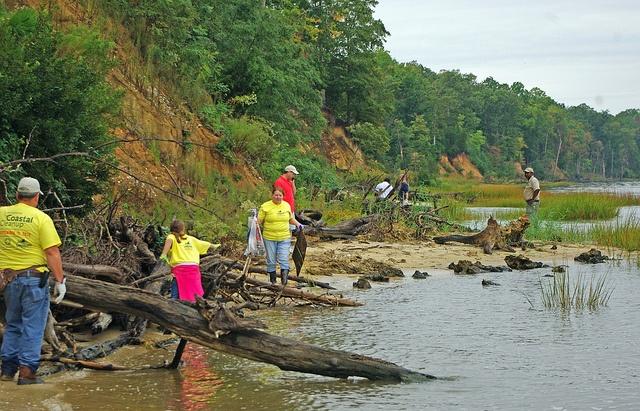

By Robert Bikel
Over the last decade, corporate social responsibility, or CSR, has become ingrained in the culture of many corporations. But a new global survey has found that consumers are demanding more than a handful of contributions and a glossy end-of-year report.
The report from global marketing agency Havas Worldwide, entitled Project Superbrand: 10 Truths Reshaping the Corporate World, describes the evolving demands on companies, beyond core business functions, which seek to “do well” by “doing good.”
Their survey of consumers and “prosumers” – influential consumers whose impact extends beyond their own economic impact to influence the brand choices and behaviors of others – found that consumers are now making purchasing decisions based on strong corporate values. Seventy percent of prosumers are actively seeking out information on the companies that provide the products and services they buy. Two-thirds of Prosumers globally avoid buying from companies deemed to have a negative social or environmental impact. And 80 percent of prosumers agree that a clear set of values can help a company be more profitable.
Given what consumers not just want, but increasingly demand, the question has moved beyond, "How can small businesses develop and launch a successful CSR program?” At Pepperdine Graziadio School, in the corporate world and among key stakeholders, the answer extends beyond the idea of “giving back.” The fact is, companies must integrate social and environmental values into strategies that create long-term competitive advantage. There’s no playbook for this, but entrepreneurs can focus on a few salient ideas:
Recognize that entrepreneurism and values are not mutually exclusive
One of the most visible – and impactful – examples of values-based innovation is headquartered in Los Angeles. Most businesspeople know the Toms story. In 2006, Toms founder Blake Mycoskie witnessed the hardships faced by Argentinian children growing up without shoes. In response, he created Toms Shoes and a one-to-one business model in which every pair of shoes purchased is matched with a new pair of shoes for a child in need.
Since the company began operations, it has given away 10 million pairs of shoes and provided free eye care to more than 150,000 people. And it launched Toms Roasting, a coffee venture under which for every bag of coffee sold, Toms provides a week’s worth of water to a person in need. That new venture has provided more than 175,000 weeks of clean drinking water to people in need around the world.
Oh, and along the way, entrepreneur Mycoskie has built a business estimated to be worth $625 million.
Work locally
Not all companies want to emulate the model of Toms, a company that proudly states that “giving is our DNA,” and most don’t have the business models or resources where this would make sense. That doesn’t mean they can’t make an impact.
Small businesses sometimes operate under the assumption that their social impact must be large-scale in order to resonate with customers and create shared value for stakeholders. In fact, the Havas study found that local efforts pay big dividends: “Solving global problems is important, but meaningful connections also must take place at the local level. A majority of our global respondents — including nearly three-quarters of prosumers — are looking for their favorite brands to play a bigger role in their local communities. Nearly 9 in 10 prosumers believe it’s important for companies to improve the communities in which they operate.”
There are thousands of opportunities to have a meaningful impact here in Los Angeles, for example, including with local food banks and at-risk children, at local schools, and through clean-ups at local beaches. Business owners should ask themselves what areas of impact they’re passionate about – and pursue those passions locally – to build their local brand. (For the record, Pepperdine is also joining in by supporting the once-homeless start small businesses though the Pepperdine Microenterprise Program.)
“Goodness” begins at home
In our Social, Ethical and Environmental Responsibility (SEER) program at Pepperdine University, in which we examine how to integrate sustainability, corporate social responsibility and ethics into entrepreneurship and innovation, we’ve found is that a culture that integrates values into strategy must originate in the C-suite and be practiced at every operational level.
Just as consumers are demanding more, employees report that they want more than a paycheck – including a sense of pride and fulfillment from their work, a purpose and a company whose values match their own. According to a survey by the nonprofit Net Impact, 53 percent of workers said that “a job where I can make an impact” was important to their happiness. Most would even take a pay cut to achieve that goal.
Minimally, that translates to fair salaries, consideration of working arrangements that suit individual needs (such as flexible schedules and provision for religious observance), and a safe, healthy and harassment-free workplace. Most broadly, it requires that the company apply basic minimum standards -- the respect for human rights and dignity -- in all facets of business operations. The result: happier employees whose values align with the shared purpose of the company. Beyond helping with employee engagement and retention, such values-alignment unleashes the creativity of the whole organization potentially producing break-through innovation.
We’re lucky that, here in Los Angeles, entrepreneurs have unprecedented talent and resources at their disposal to target challenges through their very business models. By drawing on those resources and deploying them strategically, small businesses can build their brand and inspire customer loyalty – all by “doing good.”
Image credit: Flickr/Virginia State Parks
Robert Bikel is a Professor of Strategy and Director of the SEER Program at Pepperdine University’s Graziadio School of Business and Management. Click here for more information about Pepperdine Graziadio SEER certificate program.
Can Big Data Increase Voter Turnout?
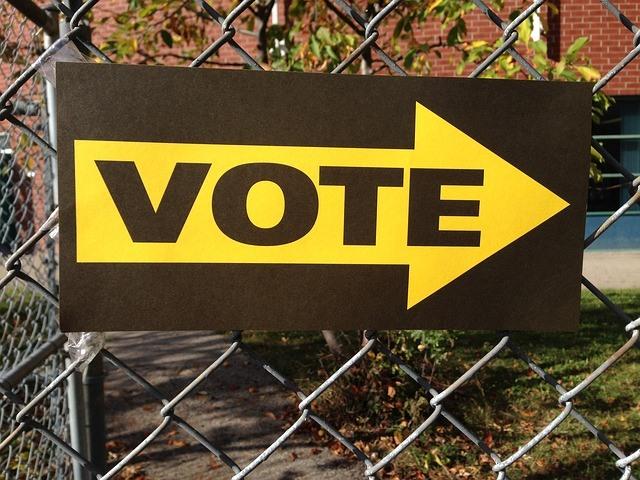

By Emma Elisse
It’s a fact of life these days that by using increasingly sophisticated big-data tools and technologies, we’re able to take the convergence of our “digital” and “real” selves to the next level. And for companies in the private sector, the digital footprints left behind when consumers ‘like’ a Facebook post or ‘share’ their feelings toward a certain product are an invaluable way to discover how that person may shop in the future. Because so much of our lives are now connected to the broader Internet of Things, it’s possible for marketing teams to understand almost everything about our lives, and use the import social issues and current events – including environmental policy and action on climate change -- to shape their campaigns.
To ensure success in this year’s presidential election, political strategists in both the Democratic and Republican parties have teamed up with big data firms to create massive datasets which hold detailed characteristic and trait profiles of millions of individuals. These political funding initiatives, which effectively target specific slices of the electorate, help candidates tailor their messages to whomever they are attempting to reach.
For example, a candidate attempting to reach pro-environmental voters in the Houston area could send certain ads only to specific registered voters registered who have typed “Nissan Leaf” into Google, or shared information from the COP21 event on their timelines.
Candidates who have based their platform around climate change may be able to use data-based advertising strategies to move people to action – but of course, the inverse is also true as well. Republican candidates, notorious for their allegiance to fossil fuel industry, also invest heavily in data-mining tools to more effectively disseminate their messages to voters across the country.
How campaigns collect your data
Xaxis, a top data mining firm, has supported several political campaigns by harvesting massive quantities of data from people across the United States. By scanning the social media profiles, online purchases and Internet searches of millions of Americans, Xaxis compiles a comprehensive list of likely voters and where they stand on certain issues. Political campaigns purchase this information to make their efforts more effective. In this way, instead of distributing a single advertisement about a candidate’s positions to every household in Detroit, highly specialized advertisements are sent only to likely supporters.Yet for political campaigns, the realm of digital is still relatively new. Television has long been the standard medium through which to connect and communicate, and it’s still the most effective -- reaching 87 percent of people over 18, as Derek Willis wrote in the New York Times earlier this year.
To this end, it was in the interest of pay-TV companies Dish Network and DirecTV to begin offering services allowing political campaigns to utilize their digital data to distribute certain advertisements for particular households. Dish and DirecTV had previously joined audiences in their “D2 initiative," which mined TV set-top box data to target ads at a household level for consumer advertisers. By bringing this technology to politics with the addition of voter files and data provided by i360 and Clarity Campaigns/TargetSmart (Republican and Democratic data companies, respectively), big data will increasingly alter the way politicians buy ads designed to persuade or to move people to action.
Data demographics
After all of the data is gathered, it is further analyzed to create a granular picture of each individual’s demographic profile. Once likely-voter profiles are assembled, the information is delivered to the campaigns. Campaigns use video advertising companies like Eyeview to create videos that appeal to voter personalities and interests. Some videos may utilize logic and fact-based strategies and others may use emotional appeals.Keyword data can also be used to locate certain interest groups. By discovering individuals who searched for terms like 'Honda Prius,' 'green living' or 'vegan diets,' campaigns can learn where they can effectively concentrate their advertisements about environmental issues. This is an important aspect of informing and mobilizing voters for an election. Identifying Internet users who frequently visit science and energy websites can also be used to find people who support the environment. To this end, similar methods can be used to flag potential voters who support gun rights or free trade.
Climate action and the 2016 election
Republican presidential candidate Ted Cruz, a denier of climate change, uses data-mining firm Cambridge Analytica to gather psychological profiles of potential voters across the United States. Using this revealing information, Cruz has been able to create specific attack-advertisements on gun legislation and environmental issues. Because Cruz is showing these advertisements to individuals whose beliefs are in opposition to these causes, he is attracting quite a bit of support from voters in certain areas of the South and Midwest. This could increase the likelihood of Cruz surging forward to take the Republican nomination for the upcoming election.That said, substantial funding and the same data-based strategies can help environmentalists elect a leader who will support strong action on climate change. Environmentalist Tom Steyer's super PAC, NextGen Climate Action, has expressed support for Democratic candidate Bernie Sanders. This may help the Sanders' campaign move forward and target the right voters, raising further awareness of his plans to move away from fossil fuels and toward more renewable sources of energy.
Consistently showing potential voters advertisements about topics that they are interested in can increase voter turnout. The technological tools of big-data analytics make this possible on a unprecedented scale. Data-mining has transformed the strategic landscape of modern political campaigns. With the proper funding, the resources of big data can be used to elect leaders that will protect the environment from the effects of anthropogenic climate change.
Image credit: Pixabay
Emma Elisse is a freelance writer and blogger from the Midwest. After going to college in Florida she relocated to Chicago, where she now lives with a roommate and two rabbits. She primarily covers entertainment topics and issues pertaining to the environment.
An Open-Plan Office Can Cut Your Emissions
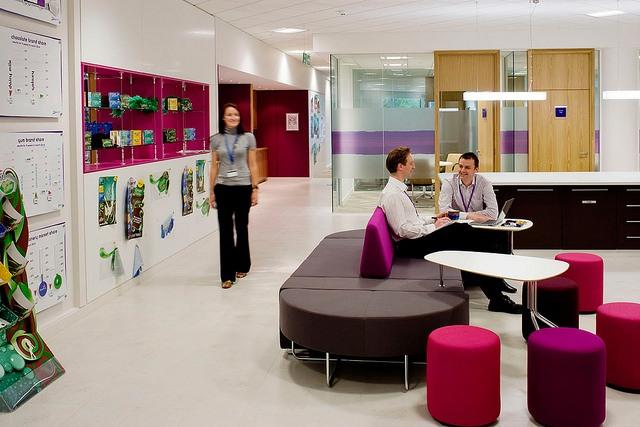

By Dick Resch
Visualize greenhouse gas emissions. A roadway congested with cars and trucks might be the first image that comes to mind.
That's close, but not quite right. The buildings on the side of the road are actually the bigger polluters.
The building sector of the U.S. economy uses more energy and emits more greenhouse gases than any other. Buildings account for 39 percent of energy use and 38 percent of carbon emissions nationwide.
The 40 billion square feet of drywall the United States produces every year generate 51 million tons of greenhouse gases. Or consider concrete: Pound for pound, we human beings consume more concrete each year than any substance but water. Concrete comes from cement, and producing a single ton of it results in a corresponding ton of carbon emissions.
With the economy finally having absorbed excess capacity left over from the financial crisis and recession, demand for reconstruction and smaller-scale renovation will be growing in the five years ahead, according to the research firm IBISWorld. Construction cranes are popping up all over.
Many managers are incorporating low-flow toilets and energy-efficient lighting to reduce the carbon footprint of their buildings. That's helpful, but it's not enough.
It's critical for businesses and builders to go green from the moment they decide to move forward with a new office or remodel an old one. New technologies and new approaches to the human element can do wonders for the environment even as they improve productivity.
Architectural walls, for example, look like traditional construction with two-by-fours and drywall but move easily to reconfigure a space. They can be manufactured out of eco-friendly, recycled or renewable materials from wheat, soy and sunflower board to linoleum, cork and rubber-wood.
Such walls are also well suited to open-plan environments, which are greener than their more traditional alternatives. Rather than calling a construction team, office managers can move the walls as needed to set up meeting rooms or private offices.
As businesses make more efficient use of their office space -- by introducing larger, shared desks for employees, for example -- they reduce waste and emissions. Better airflow from an open plan can also reduce heating and air-conditioning needs.
Whenever a company doesn't have to spend money on something, that's a gain for the bottom line as well as the environment. When the tech firm Cisco switched to an open-plan, shared workspace environment, the company realized savings of 60 percent on cabling, 40 percent on switches and switch ports, and 42 percent in construction costs.
Or consider the example set by the financial-services company Macquarie. With a variety of innovative measures, the firm has managed to cuts its energy consumption in half.
Rather than relying on traditional HVAC, Macquarie pipes in ocean water to air-condition its offices. An interior staircase connects suites of offices throughout the building, reducing elevator use by 50 percent. The company's offices are oriented around "meeting pods" and flexible "work neighborhoods," which allow for the movement of people rather than walls.
The human element also benefits from the greening of the workplace. According to a study published in the Harvard Business Review, the random encounters produced by open-plan work areas make employees more productive.
In a traditional office, eavesdropping can get you in trouble. In an open-plan office, someone overhearing a conversation about a problem just might have a good idea for a solution. Facebook is planning a mile-long shared workspace to promote such interaction.
Changing out the light bulbs is not enough to go green. The workplace of the future will have a minimal carbon footprint thanks to better technology and better human ecology.
Dick Resch is CEO of KI Furniture (www.ki.com).
Other Shoe Drops: Malheur 'Occupation' Ends with Arrest of Cliven Bundy


When Ammon Bundy and his gang of armed thugs barricaded themselves inside the Malhuer National Wildlife Refuge in Harney County, Oregon, last month, the idea was to somehow "turn over" this public property to local ranchers, loggers and miners. Most folks are still trying to figure out exactly how that was supposed to work.
In the meantime, Bundy and more than a dozen of his gang are now cooling their heels in jail, and his father Cliven Bundy has just been arrested in Portland.
The Malheur takeover: A honey trap for Cliven Bundy
To those of you familiar with the Bundys, the Cliven part may still come as something of a surprise.
After all, it has been two years since Cliven, a Nevada rancher, also called upon a gang of armed thugs to stave off federal officers, who had come to enforce a legal action against him. The elder Bundy had been grazing his cattle on public property for years without paying grazing fees, taking a page from the ALEC "states' rights" lobbying agenda by claiming that the federal government had no constitutional authority to manage land outside of Washington, D.C.
Rather than pressing the issue, federal officials backed down. All this time, Cliven has apparently been free to conduct his business, coming and going at will.
The failure to press the enforcement action has frustrated a number of pundits and other observers, but the long delay did give Cliven ample time to dig a bigger hole for himself.
We'll know more when all of the charges are made public, but we're guessing it has something to do with Cliven's recent public statements, to the media and on his own social media, egging on the occupiers and their supporters (the First Amendment does not guarantee the right to incite crime).
That's exactly the "honey trap" tactic that law enforcement took with Ammon and his gang. They made national headlines when they barricaded themselves into the Malheur refuge on Jan. 3, but for weeks law enforcement was practically invisible. Instead of forcing a confrontation, they enabled the occupiers and their supporters to come and go at will. That provided Ammon and his gang with plenty of time to rack up a long list of criminal actions, many conveniently recorded by the mainstream media and on their own social media.
To round out the comparison, Ammon and leading members of his gang were arrested only after they drove off the refuge together, lured by the promise of a sympathetic rally in another county at the invitation of that county's sheriff. They were caught in a roadblock on a remote stretch of highway, far from the assistance of other supporters, and where the risk of harm to bystanders was practically zero.
Similarly, Cliven was arrested only after he left his comfort zone, and traveled from Nevada to Portland, Oregon. As for why he did that, consider that last weekend Ammon issued a somewhat pathetic video plea from his Portland jail, begging elected officials in Western states to visit and show support for him and the other detainees. Apparently nobody wants to get within 100 miles of what is now a very hot potato, but Cliven could not resist the bait. He left his ranch and boarded an airplane, virtually guaranteeing that he would be unarmed upon his arrival in Portland.
Sure enough, the trap was sprung and Cliven Bundy was arrested at Portland International Airport on Wednesday evening, apparently facing the same charges that sons Ammon and Ryan face: interfering with federal officers.
As of this writing, only four holdouts remain at the refuge. Earlier this week, federal agents moved in to contain the four within a small part of the refuge, and by Wednesday evening they had agreed to give themselves up on Thursday morning.
Whether or not that happens, it looks like the Malheur mess is finally winding down to a conclusion that accomplishes none of Ammon Bundy's goals.
The ALEC connection
So, what was that all about?
We brought up the powerful business lobbying group ALEC (the American Legislative Exchange Council) at the beginning of this post because the privatization of federal lands is high on the organization's to-do list. ALEC's strategy is to undermine federal policy by coordinating state-level legislation through key officials. In the case of land policy, the idea is to transfer federal property to the states, as a step toward more intensive resource extraction and private ownership.
Intentional or not, Ammon and Cliven Bundy have been acting out ALEC's agenda while endangering the public, putting themselves at risk of criminal prosecution, and ensnaring others in criminal activity.
Not facing charges for any of the Malheur mess, of course, are the billionaire brothers behind Koch Industries, who are major funders of ALEC and other related organizations. Not surprisingly, the Koch brothers count ranching, logging and mining among their interests.
On the other hand, major U.S. corporations that used to support ALEC have been deserting the organization by the dozens for its increasingly extremist positions. We're guessing that this latest episode will motivate another round of defections, further depriving Koch Industries of the safety-in-numbers shield that has served to protect it from public scrutiny.
The public eye is also taking a closer look at the Koch brothers with the release last month of the meticulously researched new book "Dark Money."
Update: The four remaining holdouts -- Jeff Banta, Sean Anderson, Sandy Anderson and David Fry -- have been taken into FBI custody.
Photo: white pelicans at Malheur National Wildlife Refuge by Barbara Wheeler, via U.S. Fish & Wildlife Service, flickr.com.